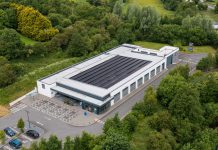 Workspace Technology discusses the issue of energy consumption and the impact of data centres. Could data centres improve their carbon footprint and sustainability?
Workspace Technology discusses the issue of energy consumption and the impact of data centres. Could data centres improve their carbon footprint and sustainability?
Ten years ago, data centres consumed virtually nothing in terms of energy but now they consume 3% of the global electricity supply and account for 2% of greenhouse gas emissions. In fact, data centres now have the same carbon footprint as the airline industry. Worryingly, according to Ian Bitterlin, a visiting professor at the University of Leeds, energy used by Data Centres is doubling every four years.
Cited in an article in the Guardian, back in 2016, during 2015 the world’s data centres used 416.2 Terawatt hours of electricity far higher than the whole of the UK’s total consumption. So what changes can we make to our data centre to assist in lowering the demand of an energy source that is, becoming difficult to produce to keep up with demand and affecting our environment?
As we live and conduct business in a technological world, we are relying more on the Internet and associated devices to carry out our everyday tasks. Maybe we need to start lessening the reliance on channels such as the IoT and revert to more traditional working processes, but how practical is that if we are to compete effectively. This decision is one that more than likely will have to be driven by Government, via energy providers or by the innovators of technology themselves. But, there are ways to reduce your data centres’ energy consumption that doesn’t require such radical changes.
The average PUE within the UK data centre industry is conservatively estimated at 1.8, and while not all data centres are under performing it is a fact that the average real operational PUE across the UK is >1.8. This represents an effective efficiency of only 55%.
By enlisting the services of professionals to undertake Data Centre Optimisation Services it could result in potential energy savings whilst assisting in reducing your carbon footprint. According to experts, Workspace Technology Ltd, per 100kW of I.T load the average energy savings is in the region of 60kW (based on PUE 1.8 reducing to PUE 1.2) equating to a revenue saving of £52,000 per year.
A simple three step process makes it very easy to implement an effective optimisation plan. Firstly, a Data Centre Audit is undertaken to identify key areas of improvement within the current arrangements. Like an MOT it looks at both good and bad practices throughout the facility inline with the EU Code of Conduct Best Practice Guidelines, TIA 942 Standards and Green Grid & ASHRAE recommendations.
The Audit will particularly focus on cooling, airflow and power efficiency as well as general maintenance. A report of recommendations will be produced with a list of actions required. These will then be implemented by experienced data centre engineers.
Finally, Optimisation Services will address data centre imbalances by fine tuning system settings and configuration arrangements. The aim is to achieve optimum energy performance through improved airflow efficiency, optimised environmental conditions, rebalancing of power infrastructure and replacement of poor performing plant. All will result in a lower PUE.
If you are a Data Centre operator that is faced with increasing energy bills and pressure to achieve sustainability targets, then you would benefit from Optimisation Services. Is now is the time to make a difference to the environment and to your bottom line?
Visit: www.workspace-technology.com



